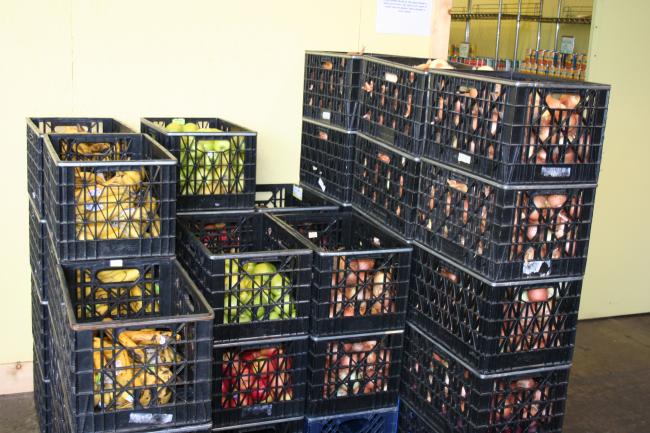More new homeless faces in Ballard
For the Ballard Food Bank, an increase in homeless means a need for more food.
“We have new faces at the food bank every week. It could be 30, it could be 200,” said executive director Nancy McKinney.
Tue, 07/12/2011
By Chris Foster, Intern
Officer Scott McGlashan of the Seattle Police Department has been noticing some new faces around the streets of Ballard, and he’s not the only one. According to McGlashan, the SPD has been receiving a higher amount of disturbance calls in the last two months regarding the homeless.
“I get them about everyday,” McGlashan said of the complaints, which usually dea with loitering and drinking. “I’ll get a call, and I’ll move them on, at the request of the business owners or property owners … It gets a lot busier in the summer.”
It’s also getting busier at the Ballard Food Bank. Since Nancy McKinney, executive director of the Ballard Food Bank, arrived in 2007, there has been an increase from 700 visitors a week to around 1100.
“We have new faces at the food bank every week. It could be 30, it could be 200,” McKinney said. “But there’s a lot of reasons for new faces.”
McKinney cited the bad economy as a reason for the increase, but also stated that the majority of people who visit the food bank aren’t necessarily homeless.
“Of our clients, just under ten percent identify as homeless,” McKinney added. “It’s really expensive to live in Seattle. Maybe somebody just got laid off, their pension’s not making, or maybe they’re between jobs.”
Graham Pruss, who recently spent an extended amount of time living on the streets in order to gather research for his honors-thesis, agreed that there has been a rise in the homeless population. The emergence of new faces, however, is not a new phenomenon.
“While there are new faces in Ballard,” Pruss suggested, “there’s a long history of this.”
According to Pruss, whose thesis won the Curtis Wienker award for anthropology at the University of Washington, Ballard has a long history of seasonal labor that contributes to the homeless population. Ship-builders, fishermen and dockworkers have nowhere to go when they run out of work.
This seasonal labor, Pruss stated, leads to seasonal vehicle residence. In particular, the industrial district of Ballard has been attracting these over-night car campers. This area has a lot of resources, as Pruss pointed out, but the main reason may be the parking regulations that prohibit large vehicles from staying anywhere else overnight.
Although Ballard is not the only community seeing a rise in the homeless population, both McKinney and McGlashan had an idea of why the increase has been so rapid here.
McGlashan suggested that the tearing down of industrial sites in place for new condos could be forcing more people into the streets, making them more noticeable to the public.
“At the old Denny’s, there was quite a few people gathered there on a regular basis. The trash was starting to pile up, but the contractor came in and fixed the fence,” McGlashan said.
“I think a lot of affordable housing has been torn down in Ballard in the last ten years, and we’re now seeing the affects of that”, McKinney offered. “Ballard’s a safer, nicer place to be than downtown Seattle.”
As far as community complaints go, McGlashan will be presenting at the Ballard District Council meeting on the SPD protocol for trespass complaints. This meeting will take place July 13 at 7 p.m. at the Ballard Library.


